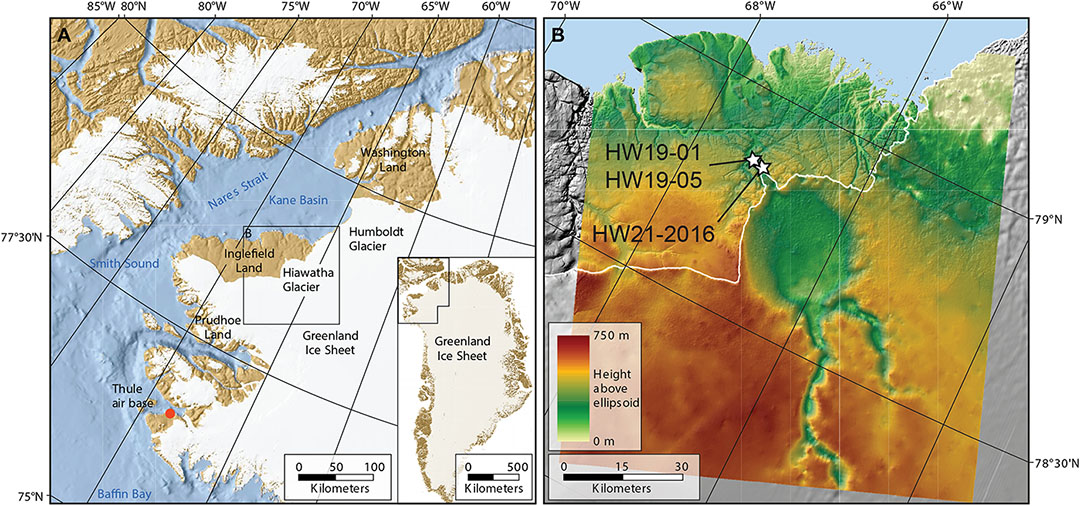
The edge of the Hiawatha glacier in northwestern Greenland, hiding the asteroid’s impact crater under its ice masses. Photo: Pierre Beck
Beneath Greenland’s ice sheet lies the huge Hiawatha crater, caused by the impact of the asteroid of the same name. After its discovery in 2015, there was much speculation about the age of the crater. Some scientists even assumed that the asteroid hit 13,000 years ago, after the appearance of man. However, new research by scientists at the University of Copenhagen’s GLOBE Institute, the Natural History Museum of Denmark and the Swedish Natural History Museum in Stockholm found that the impact must have occurred about 58 million years ago – eight million years after an even larger asteroid had led to the extinction of the dinosaurs. The study was published in the journal Science Advances.
The impact of the Hiawatha asteroid in northwestern Greenland left a crater 31 kilometers in diameter, releasing several million times more energy than the explosion of an atomic bomb. Today, the crater lies hidden under a kilometer-thick layer of ice. At the time of the impact, the climate in the Arctic was still temperate at about 20° C, and diverse wildlife roamed the rainforests.
The Danish and Swedish researchers collected samples of sand grains and rocks in the rivers draining from the Hiawatha Glacier. They used different methods to date the samples in the laboratory: at the Natural History Museum of Denmark, the researchers heated the sand grains with a laser until they released argon gas. In parallel, rock samples were analyzed at the Swedish Natural History Museum using uranium-lead dating of the mineral zircon, which comes from rock melted during the impact. Both laboratories independently dated the samples to be about 58 million years old.

For the current study, the research team took samples from an outlet of Hiawatha Glacier (right, white stars). The topography of the crater was determined by NASA and the Alfred Wegener Institute using airborne radar measurements. Map: Kenny et al. 2022
“Dating the crater has been a particularly tough nut to crack, so it’s very satisfying that two laboratories in Denmark and Sweden, using different dating methods arrived at the same conclusion. As such, I’m convinced that we’ve determined the crater’s actual age, which is much older than many people once thought,” says study co-author Michael Storey, of the Natural History Museum of Denmark.
Lead author Dr Gavin Kenny, of the Swedish Natural History Museum, said: “Determining the new age of the crater surprised us all. In the future, it will help us investigate the impact’s possible effect on climate during an important epoch of Earth’s history.”
Now the task is to find out what influence the asteroid impact had on the further development of the Earth. There is still no clear evidence that it has disrupted the global climate. But thanks to the dating of the crater, the research team is now able to test various hypotheses to better understand its impact on local and global climate. Soon, it is hoped, boreholes that have been drilled through the Hiawatha Glacier, among other places, since last year as part of the “GreenDrill” project will provide more information.
Julia Hager, PolarJournal
More about this topic





